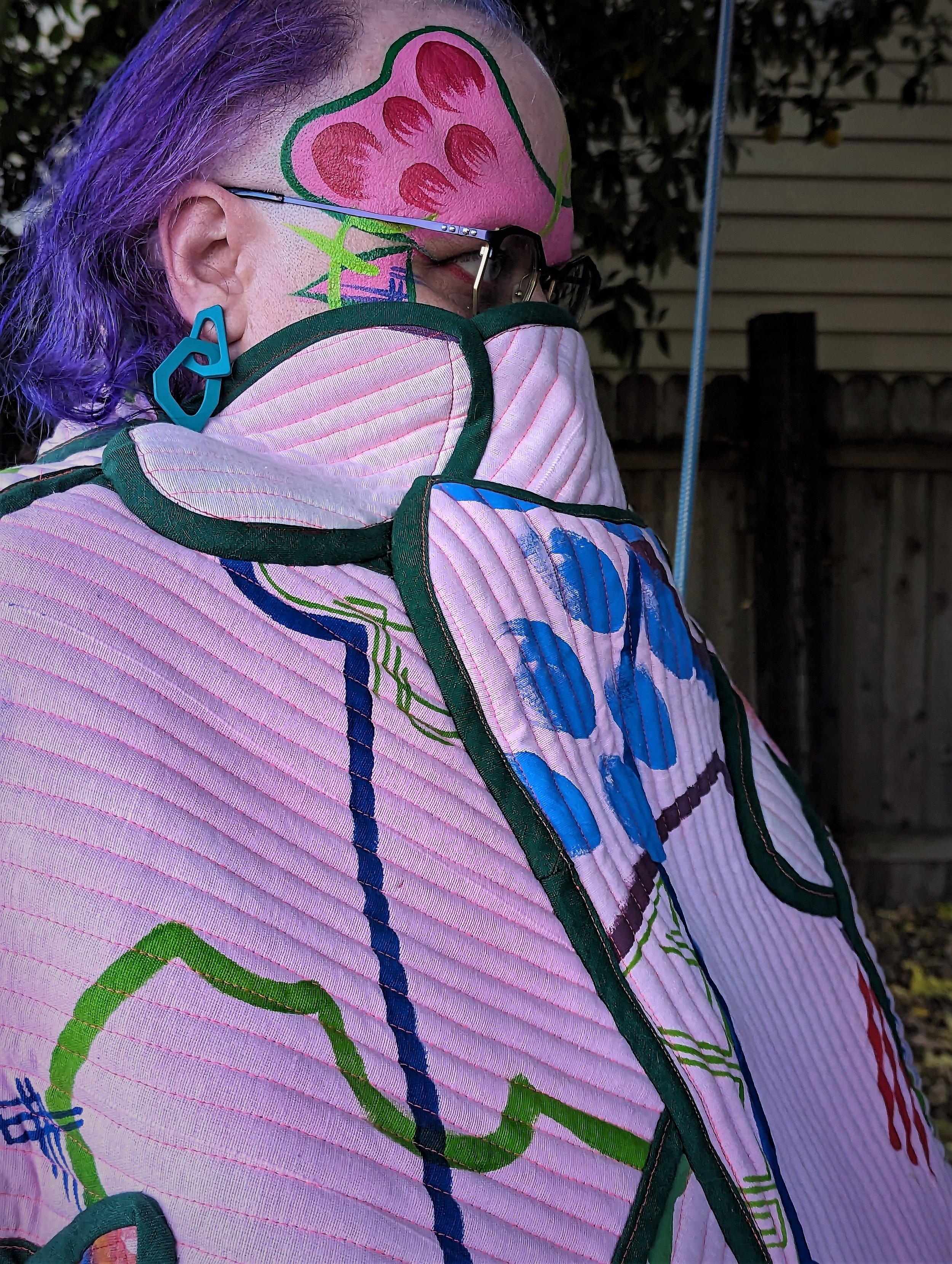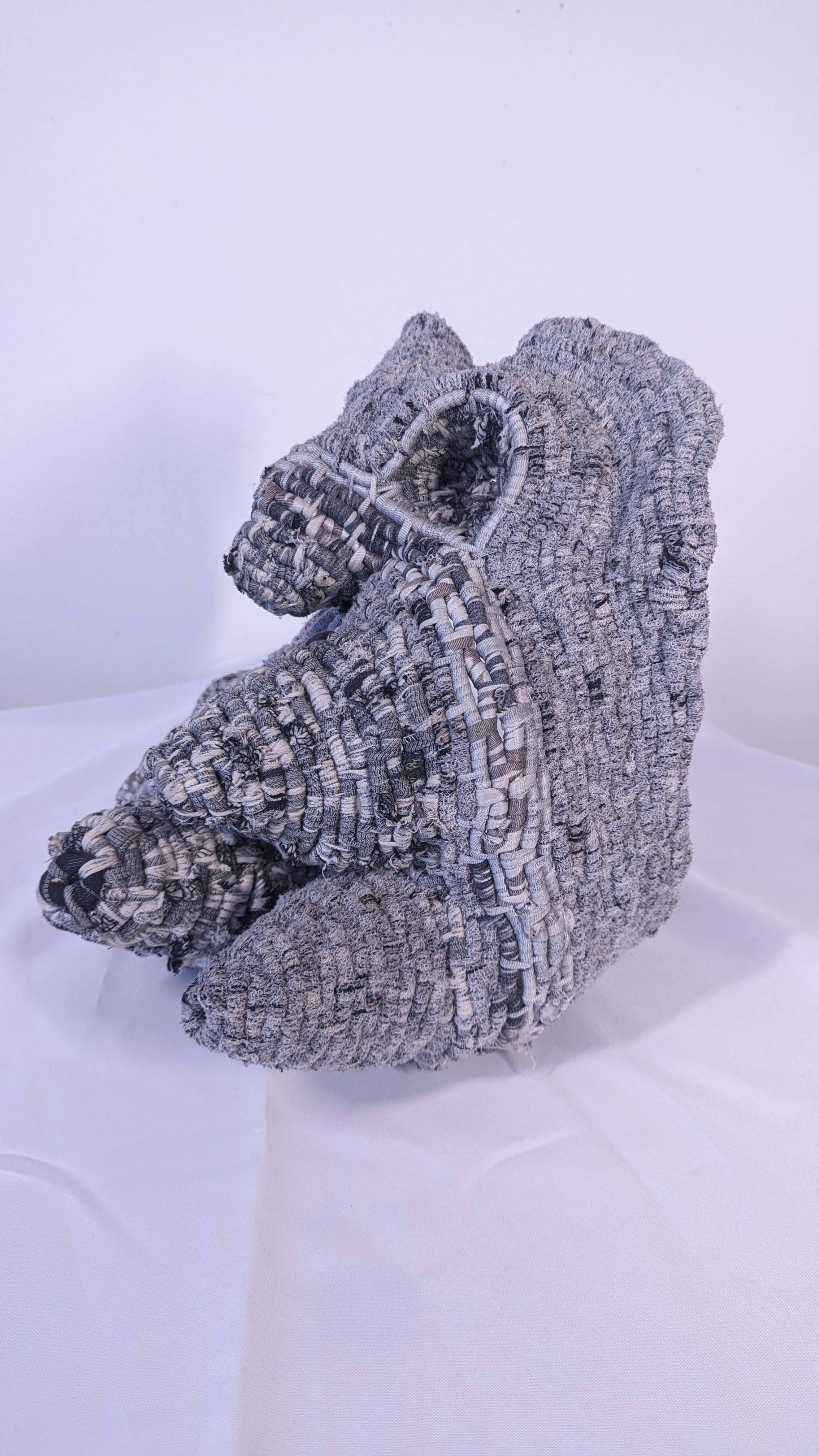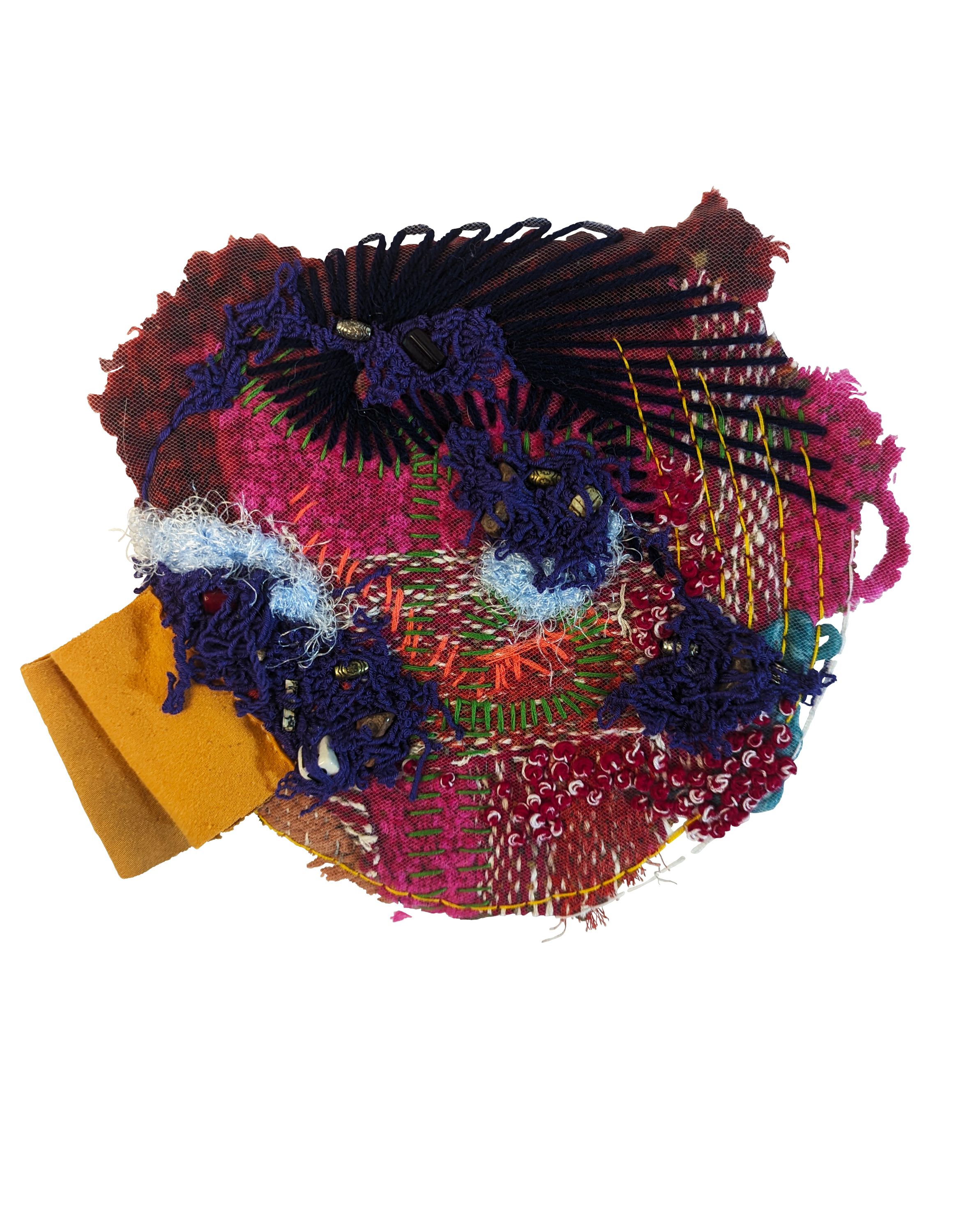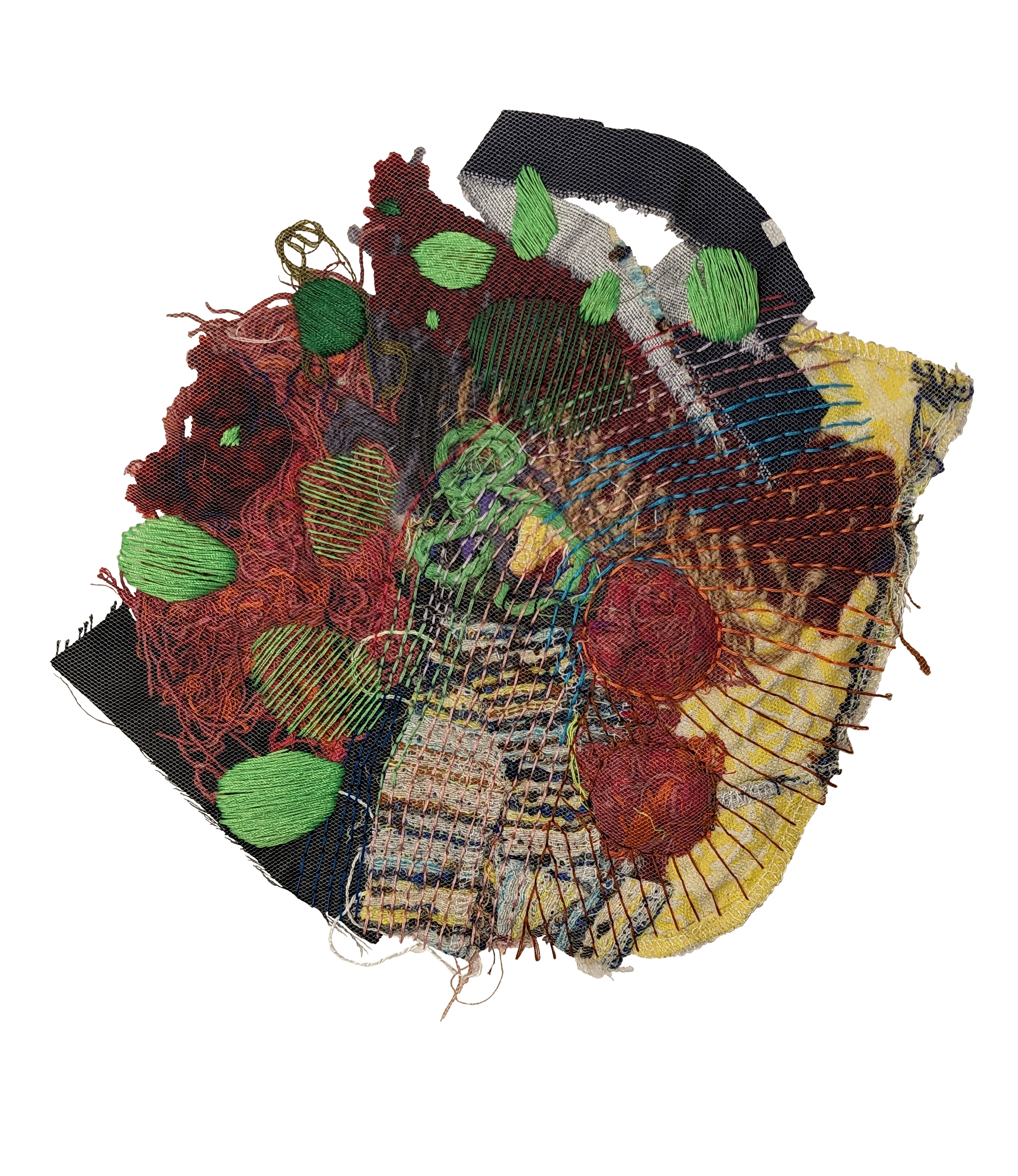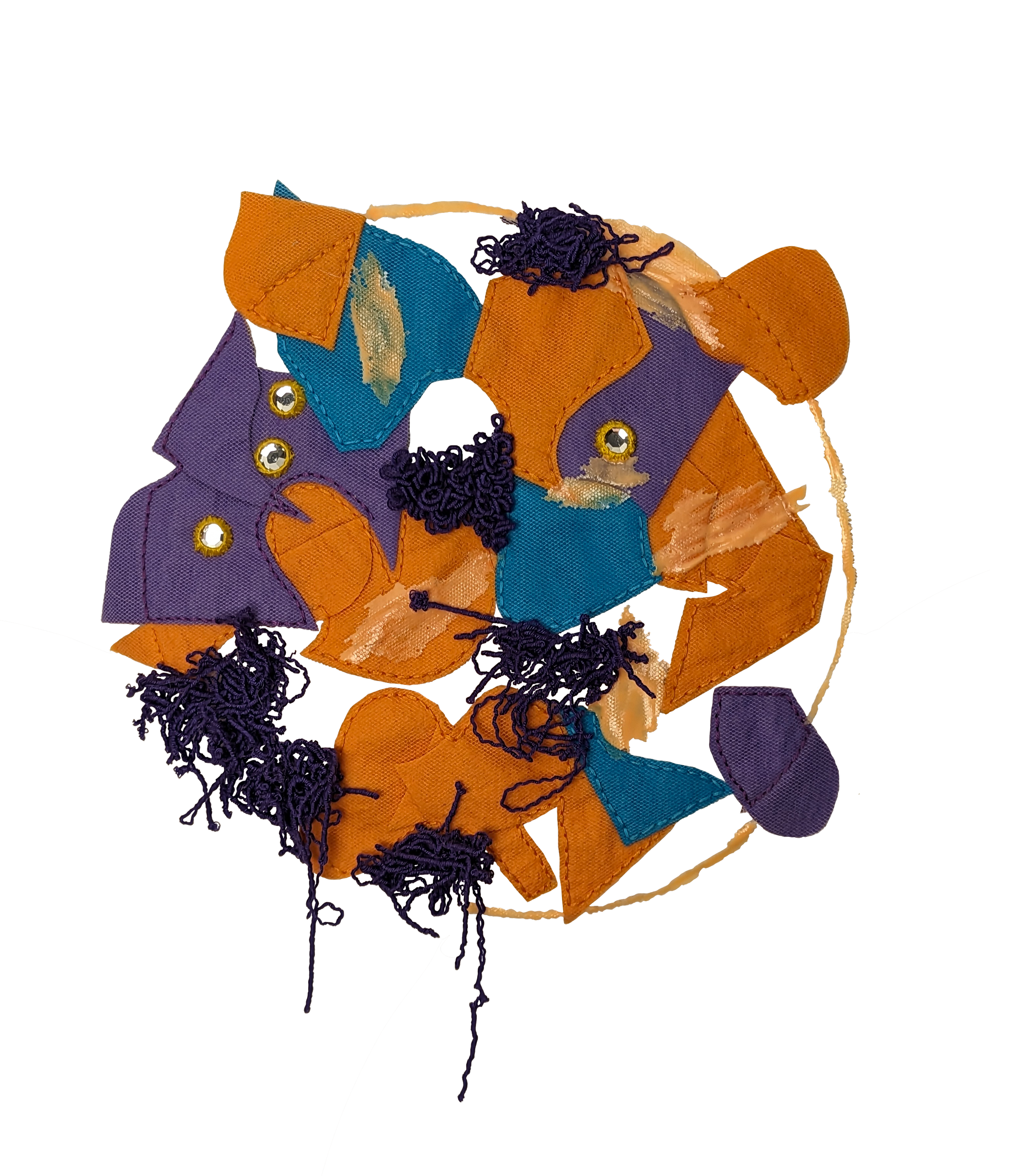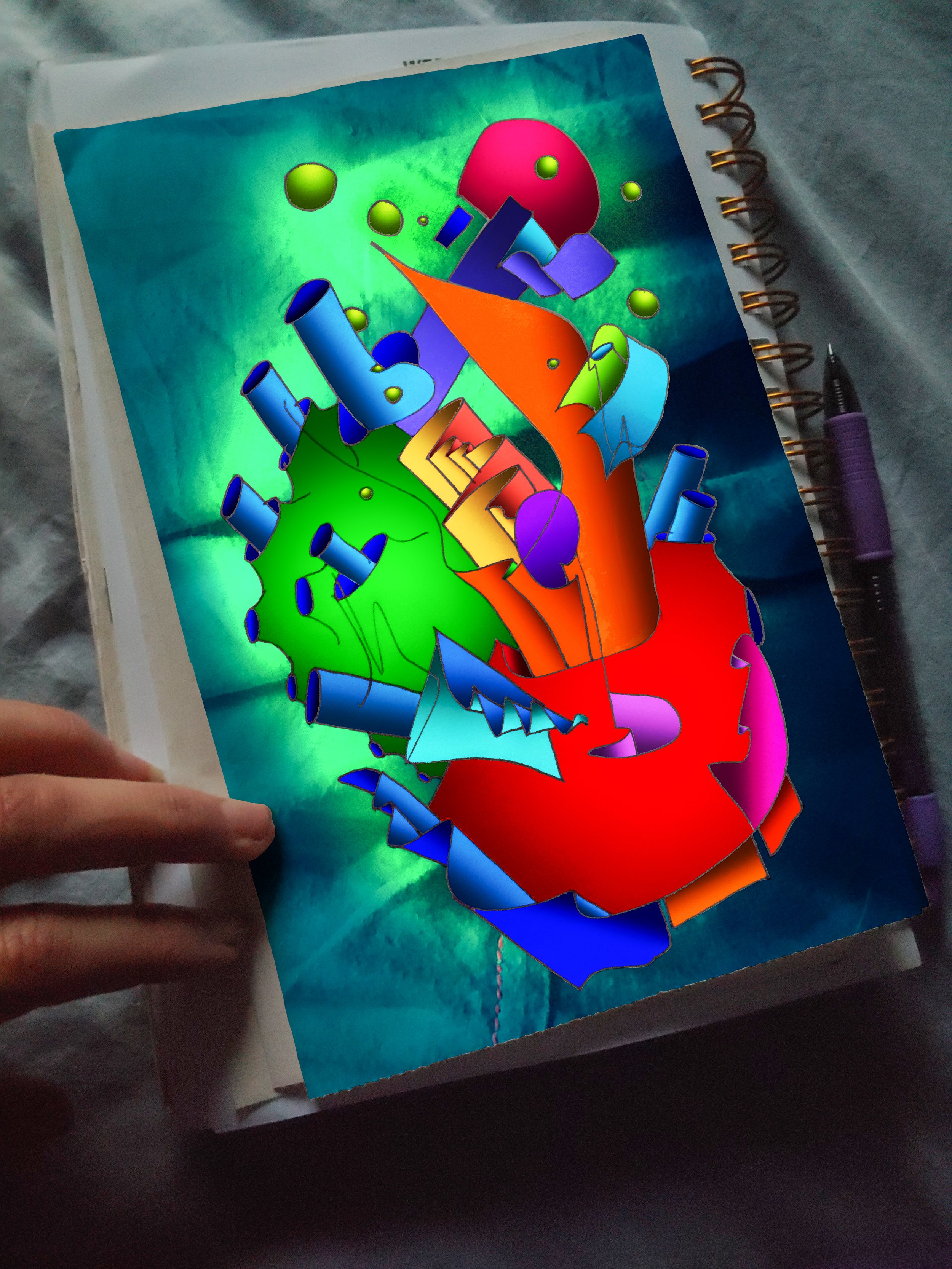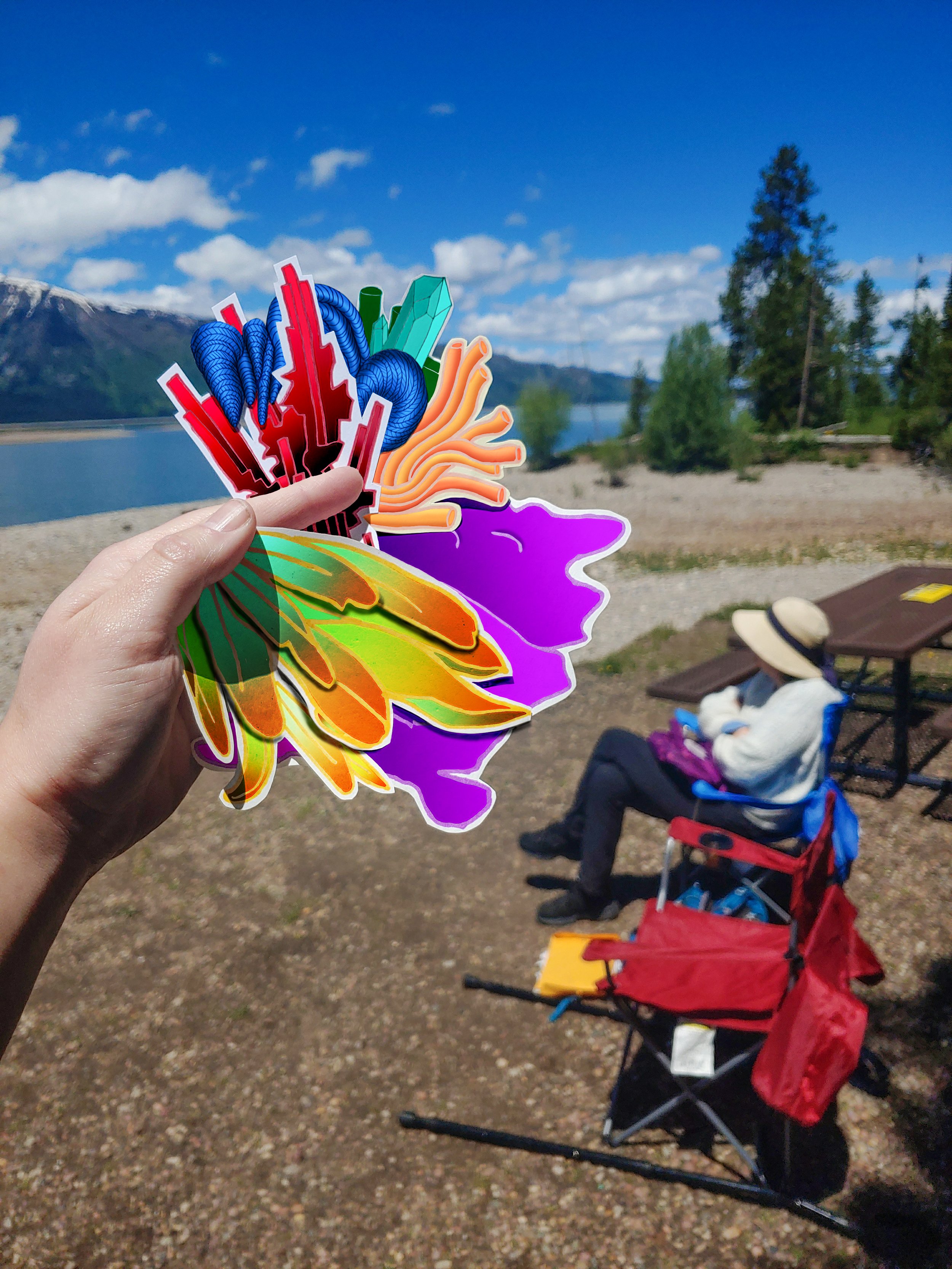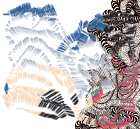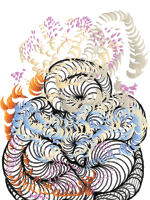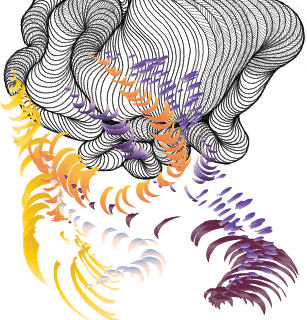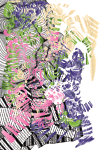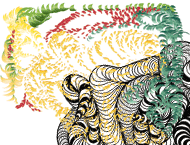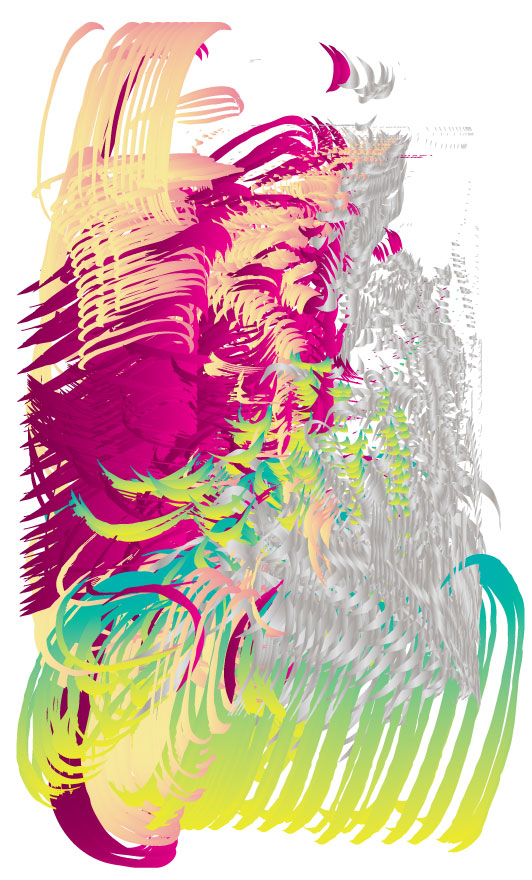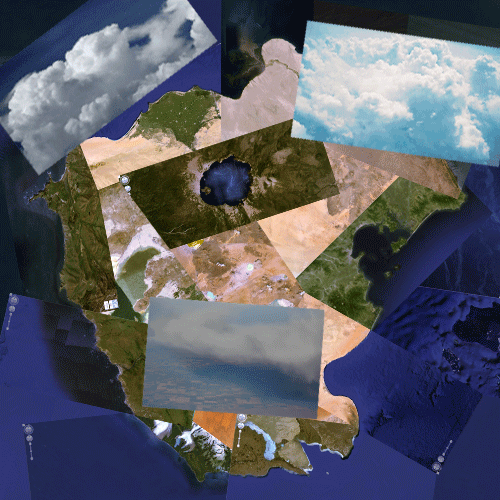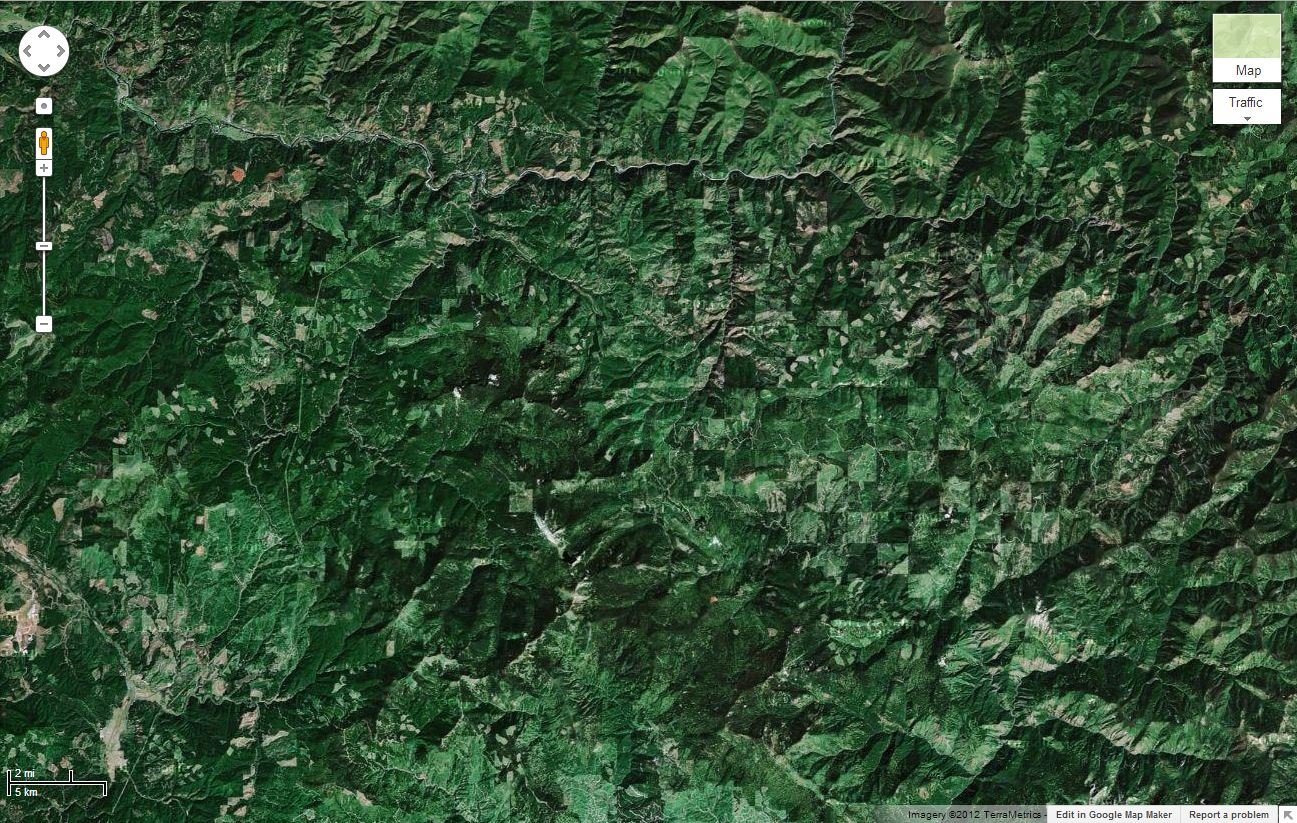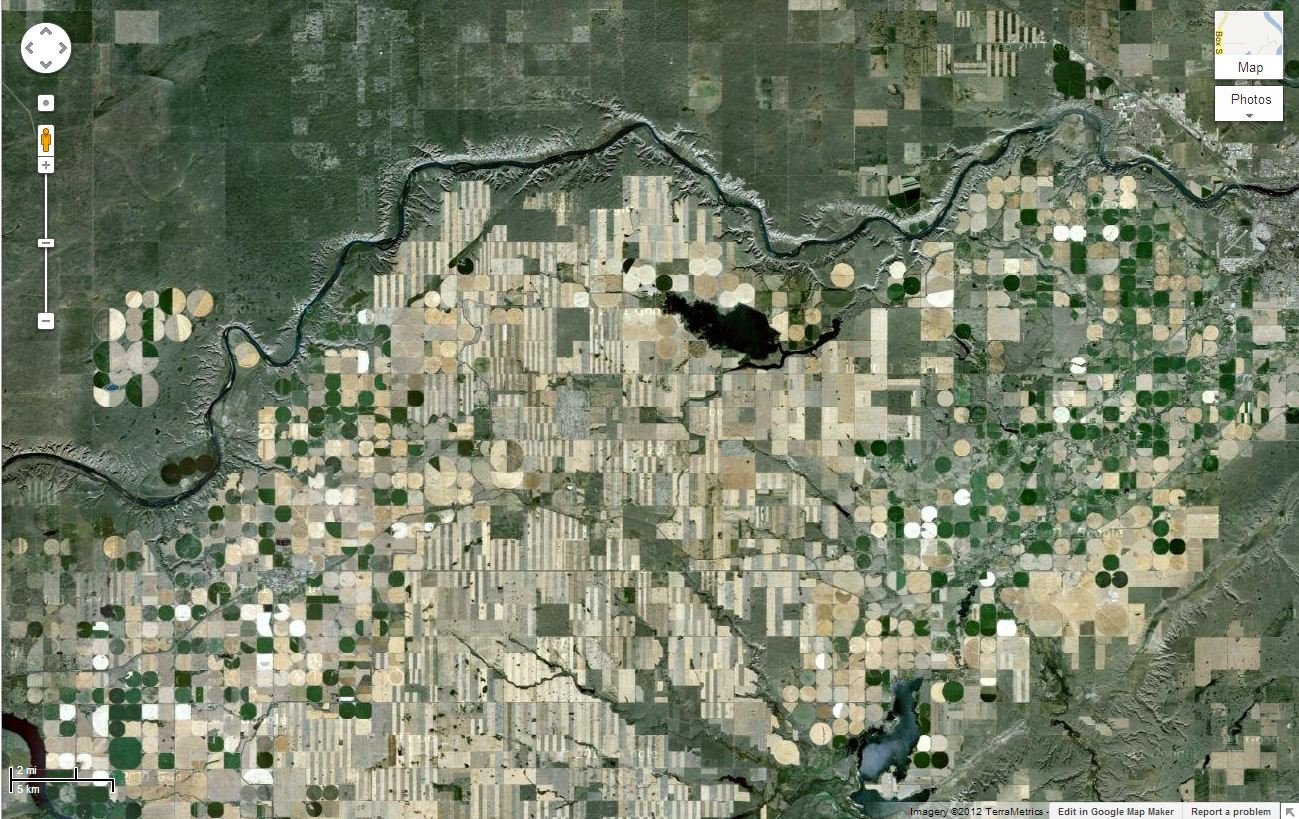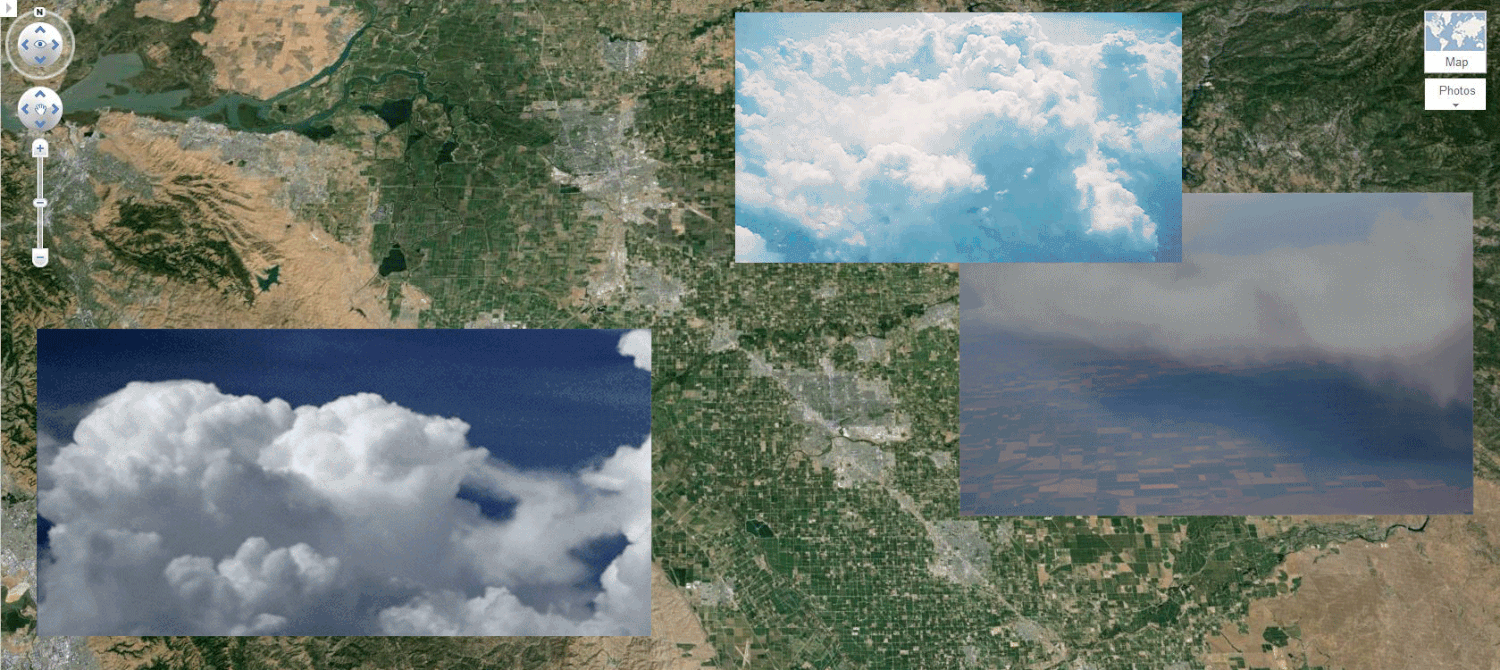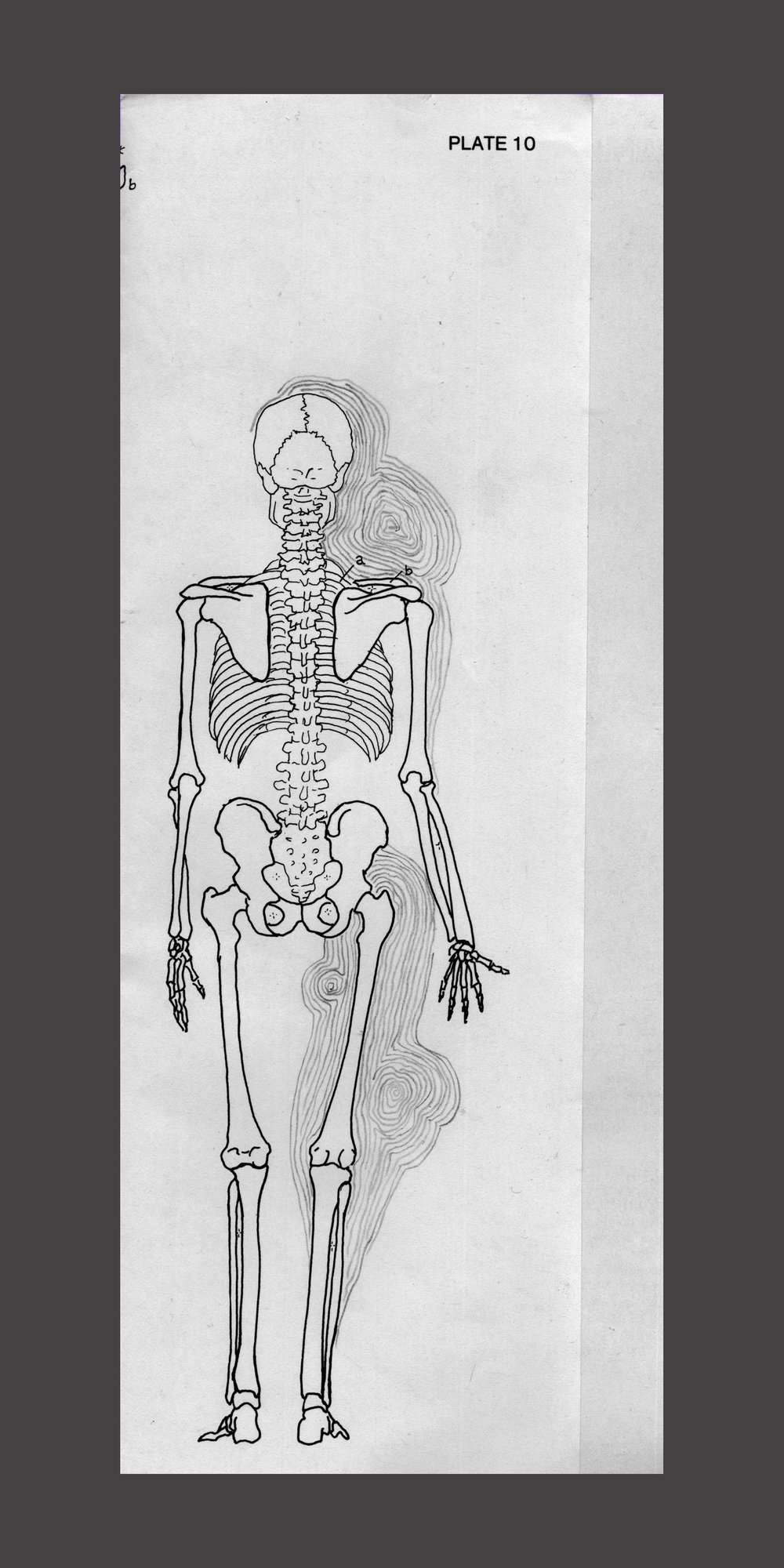Shared Skins in a works in progress sculpture series and exhibition. The sculptures are very small organically shaped quilts that can be taken apart and snapped together into sculptures, garments, blankets, toys, shelters, and tapestries by participants enabling the community to continually reshape the exhibition. Some of the sculpture components will be mailed to disabled community member homes so they can participate in the evolution of the exhibition remotely.
Art Armor
Art Armor is a series of handmade, one-of-a-kind art garments made to measure from 100% reclaimed materials for fat, disabled, and trans community members. A caretaker model allows for art object stewardship without ownership or financial obligation.
Images depict Zach (they/them), a tall fat person with thin purple hair, wearing an abstract, hand painted, pink and colorful, quilt coat and makeup mirroring the petal patterns on the garment.
Art Museum from Bed
Art Museum from bed is a distributed exhibition that show work in the homes of disabled folks in conjunction with an in-person exhibition at a gallery. For years I was tricked into the idea that real art is in art museums, real artists were the ones with galleries, selling big. Sometimes I still fall back into that mindset. But that hierarchy is yet another symptom of white supremacy, of patriarchy, of classism. Art Museum from Bed is a new/old way of exhibiting work and I believe it is vital not just to the future of my personal practice but also how to think about art objects' role in society.
The exhibition showed a series of texture sculptures called the Sensation Models. As an Autistic person with alexithymia (emotion blindness) and a chronic illness with many strange physical sensations I wanted an alternative ways to model and study feelings and sensations. Traditional tools like the emotion wheel and pain chart, that encase lived experience in two dimensional planes and linguistic cul de sacs, do not map to my experience. But more than just creating a way for me to frame and communicate my experience of emotions this project also gives me a vehicle for investigating how others experience emotions.
As the sculptures move from my home, to community homes, to the gallery and back to community homes again they create connected stories. They function as histories. Made in my home, hosted in yours, made by my hands, held in yours. They function as vessels. Made from the tailpipe of abundance, made from wasted time. They function as bodies. Made from gut punch and wet eyes, made from loud brain and heat.
Synthetic Self
Synthetic Self creates a lifelike video call interface that responds to audience questions and statements through text or verbal inputs. Here are three examples:
Installation: A cozy chair is set up in front of a screen on which a person waits idly. When you sit down they perk up, explaining they are a synthetic copy of the artist M Eifler. There is something not quite right about the face and voice. Maybe you ask them why the artist wanted to copy themselves. In response they tell you a story about M's struggles with intermittent non-verbal episodes or flip through their database of drawings and show you a page from M’s journal.
Performance: On stage you see a person with a microphone and another projected on a large screen. Together they are giving a presentation on the lived experience of chronic illness. They joke and tell stories together and the virtual performer shows images related to the stories. Near the end of the performance the virtual performer comes out as an AI copy.
Virtual Performance: You join a zoom performance. When you arrive you see 2 video performers who look eerily similar. One is labeled M Eifler and the other Synthetic Self. Both performers speak to and interact with the audience, answering questions and speaking to each other. It's quickly apparent all the little ways the living performer and the synthetic one are different but later after the performance is long over they begin to bleed together in your memory.
Mixed Signals Tarot
Mixed Signals Tarot is a deck for exploring our online and physical lives. Purchase here: https://www.makeplayingcards.com/sell/mixed-signals
Variant Phylogeny
This project is in process.
CoSAVir-23 (pronounced "co-severe-23"), is a collaborative simulation viral pandemic. It goes like this: evil genius M Eifler has cooked up a new superbug in their basement lab in San Francisco. CoSAVir-23 was synthesized from textile scraps and hand-me-down embroidery thread. Once the first strain was enervated it quickly began to multiply and mutate. Soon it will spread to the home of people disabled by Long Covid where it will further spread in sticker, temporary tattoo and selfies. This distributed exhibition will be centered around processing the trauma of Covid, communal repair, and centering disabled stories.
to be continued…
Augmented Ink
Augmented Ink is series of hybrid drawings: part ink on paper, part photograph, part digital color finger painted on a phone. The project started as a way to further explore drawing while chronically ill, with the images and techniques developed at home, in bed or on the couch, using tools that fit easily into that environment. Using A5 paper, ball point pens, books as drawing surfaces, and phone for photographs and coloring all combined to create ease of access. This expanded to include cutting out the inks on paper and staging them around the house.
But what happens when an established process meets new place?
25 images into the series M took the process on a visit to their Mothers home: an RV summering in Wyoming. M’s Mother is also disabled and has crafted her own living space to meet those limitations. In this new space M experimented with how a process designed for one kind of disabled life might need to shift and change when exposed to a very different disabled lived experience.
The inks shifted from fine liners to thicker markers to enabled the quick hand needed in a space that was constantly moving. Singular drawings creating singular photographs was replaced with a collage of smaller drawing pieces not simply held up to photograph but instead installed mixed into the complex indoor and outdoor spaces. And with limited access to electricity to recharge their phone the artist stopped making each image beginning to end before starting a new one and instead focused their limited battery on photographing, leaving the final color stage for when they returned home.
No Body is an Island
No Body is an Island is a virtual world created inside Animal Crossing. The piece reclaims the ‘island getaway’ central to the game as an anatomy diagram at land art scale. The player, themself a smaller version of the larger body, can climb inside their own skull, walk along their own spine, and investigate their own organs. But this isn’t the culturally privileged and idolized bodies laid out in Grey’s Anatomy. This body is broken and repaired, disabled and healing, transgender, fat and black. This is a marginalized body. But so too is the small self, the avatar which navigates the space. There is no outsider here. There is only self exploration of body/landscape.
The title, No Body is an Island, is taken from John Donne’s 1624 poem 'No Man is an Island' which begins (updated from the Olde English): “No man is an island entire of itself; every man is a piece of the continent, a part of the main” and ends saying “any man's death diminishes me, because I am involved in mankind. And therefore never send to know for whom the bell tolls; it tolls for thee.”
Each texture (on the square floor tiles and stacked umbrellas that make up the body) was drawn pixel by pixel in Animal Crossing’s in-game drawing app.
Anyone can visit the piece in Animal Crossings by using the dream code: DA-2449-0971-7638.
Street Spore
Spore was BlinkPopShift’s first street art piece. It was installed on July 28th 2019 in Clarion alley on a wooden power pole amidst the long tradition of mural work at the cite. The sculpture was wade from paper, glue, and a handful of zip-ties to grip the light weight body around the pole. The piece lasted about 2 months before it was turn down.
Making of:
BIG IMPORTANT EMOTION
Big Important Emotion, a 2 sculpture pair, are a pair of brown paper sculptures. Evolving from 2017’s series Unscannables, 3D paper collage sculptures exploring the line between what is possible in physical objects and surfaces and what can be seen and represented virtually, the Big Important Emotion diptych erupted at a moment of high stress and vulnerability in the artists life. All color and pattern striped were away They were made of peeled paper board, with all color and pattern striped away, and took on all the raw sharp defense so prevalent in moments of upheaval. This piece is now in the High Sierra Hermitage Collection.
Self Frottage With Light
A narrated screen capture of making a 3D self portrait frottage (also known as a rubbing) in a virtual reality paint application.
TX Watson said this piece was “slowly leading me to comprehend things about the experience [of VR] that I couldn't possibly have imagined from scratch.”
GIF Bodies
GIF Bodies are a series of 4 multi gif animations made from ink on paper drawings which model or simulate the artist’s embodied experiences of neurological malfunction.
Pain Time
Pain Time is a series of drawings/diagrams of pain over time created by stacking the frames from animations created to simulate physical pain. Each piece was an attempt to map pain time and communicate the way pain smears and stacks standard time.




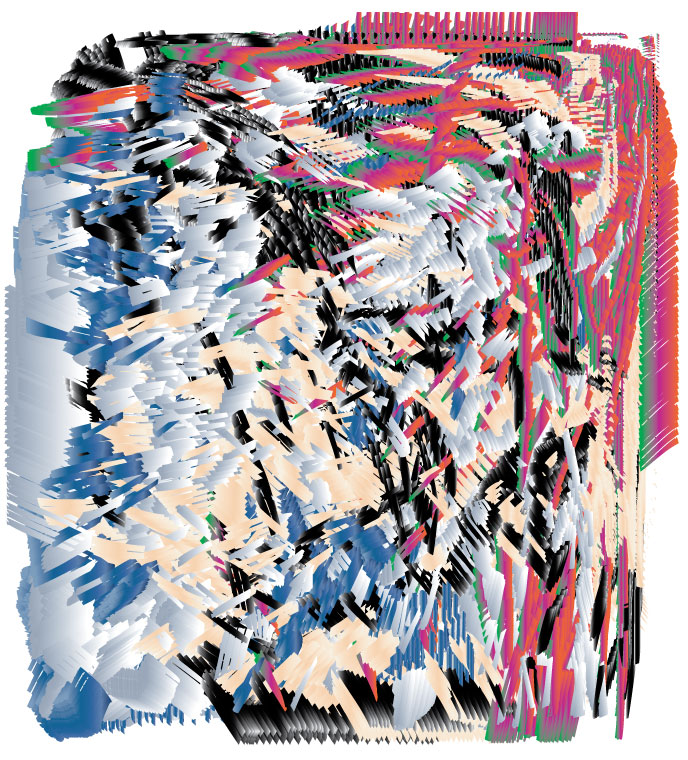


Earth Works
In Earth Works “screenshots of a standardized simulation of our world, Google Earth, are equipped with gif-footage of natural phenomenon, such as cloud movements, thunderstorms or hurricanes, sunsets, the starry sky, and in this case a whale splashing into the ocean. By adding digital images that imply an innocently romantic character, Eifler intervenes in the creation of a calculated paradise and returns content which had been rejected or not mapped at all by Google."
- EXAESSENTIALS 2017 Curator
Like Clockwork
Like Clockwork are a series of gifs modeling biological processes and embodied sensations made of a combination of ink on paper drawings, digital scans, and new and found photographs.
Pain Pages
These ink on paper drawings with digital color are maps of the ways that pain effects attention both in the physical and digital worlds. Each drawing, made in bed, was an early experiment in combining digital and physical making.
Anatomy Drawings
This series of drawings and collages explore diagrammatic depictions of the body, prosthetics, and tumors/physical abnormalities.
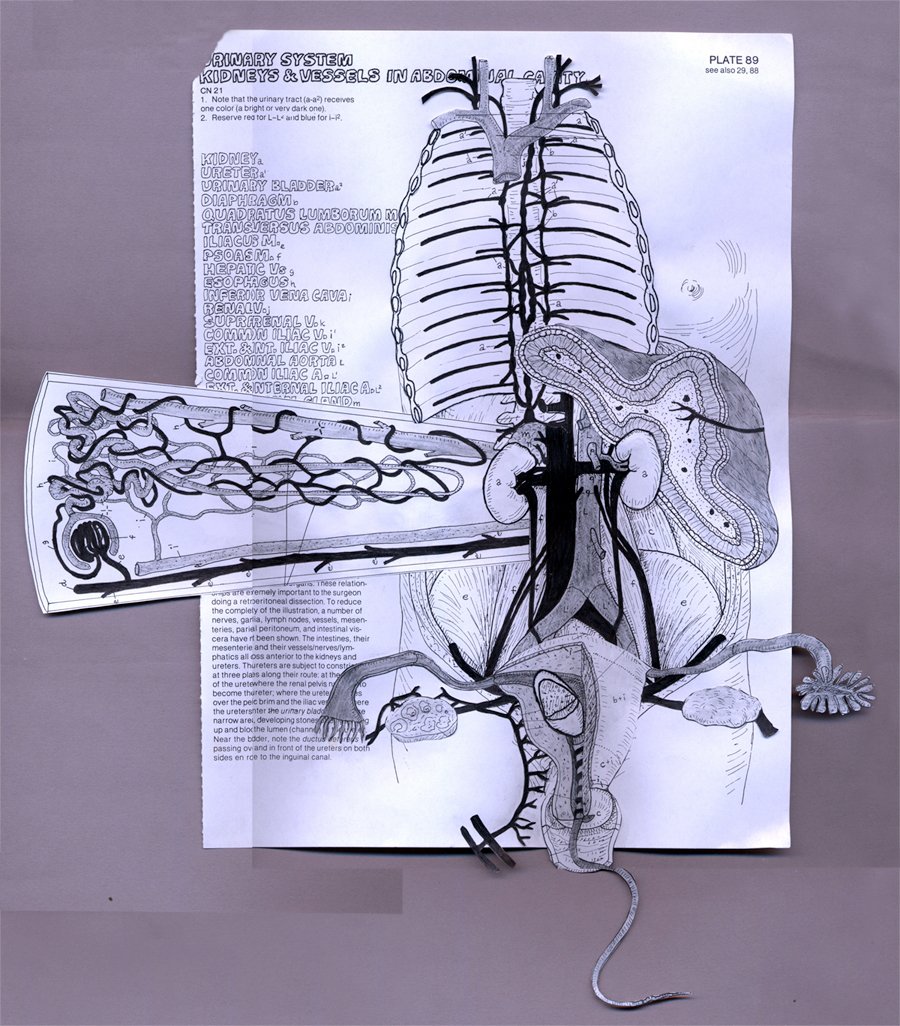




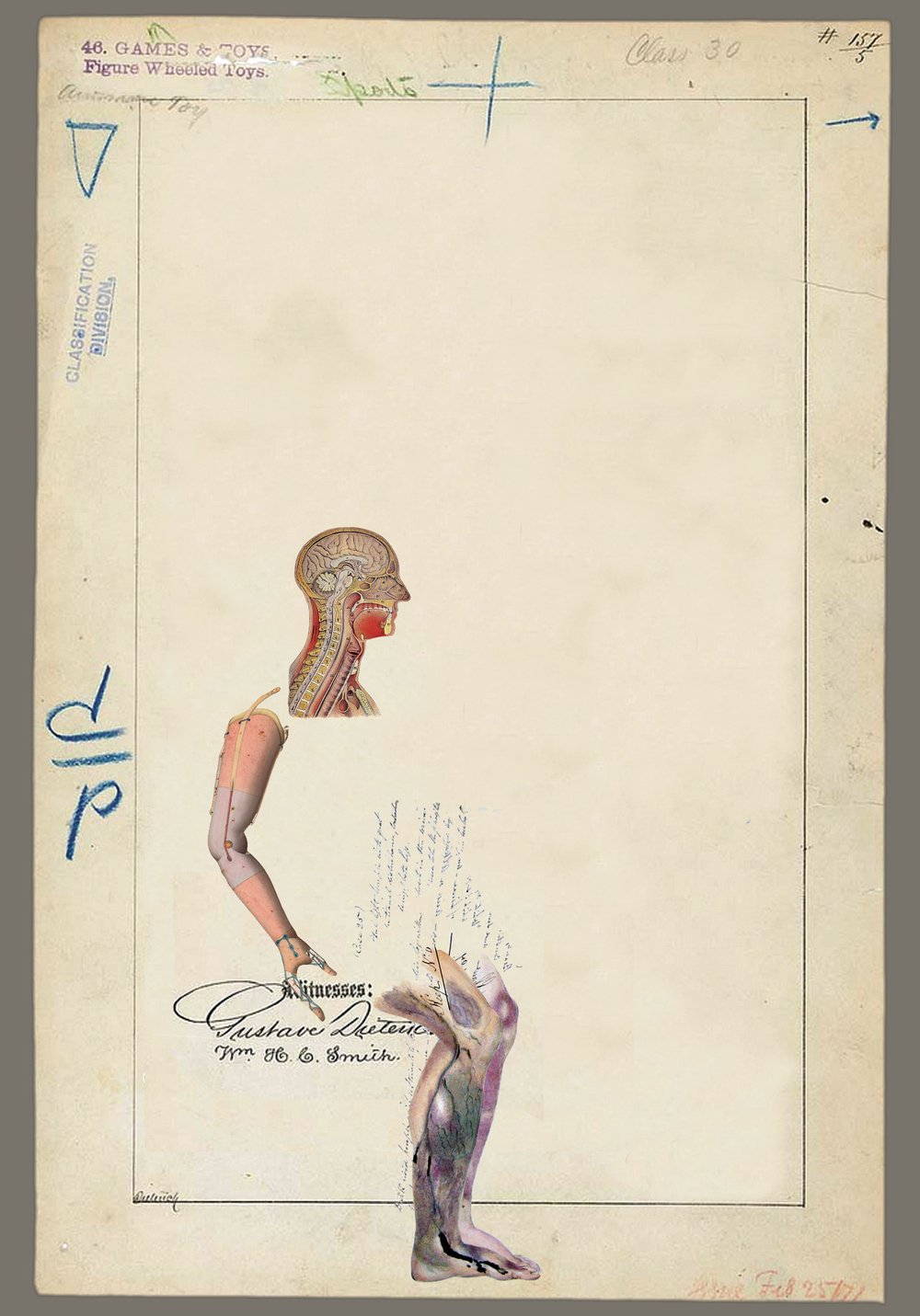





Look Inside Place












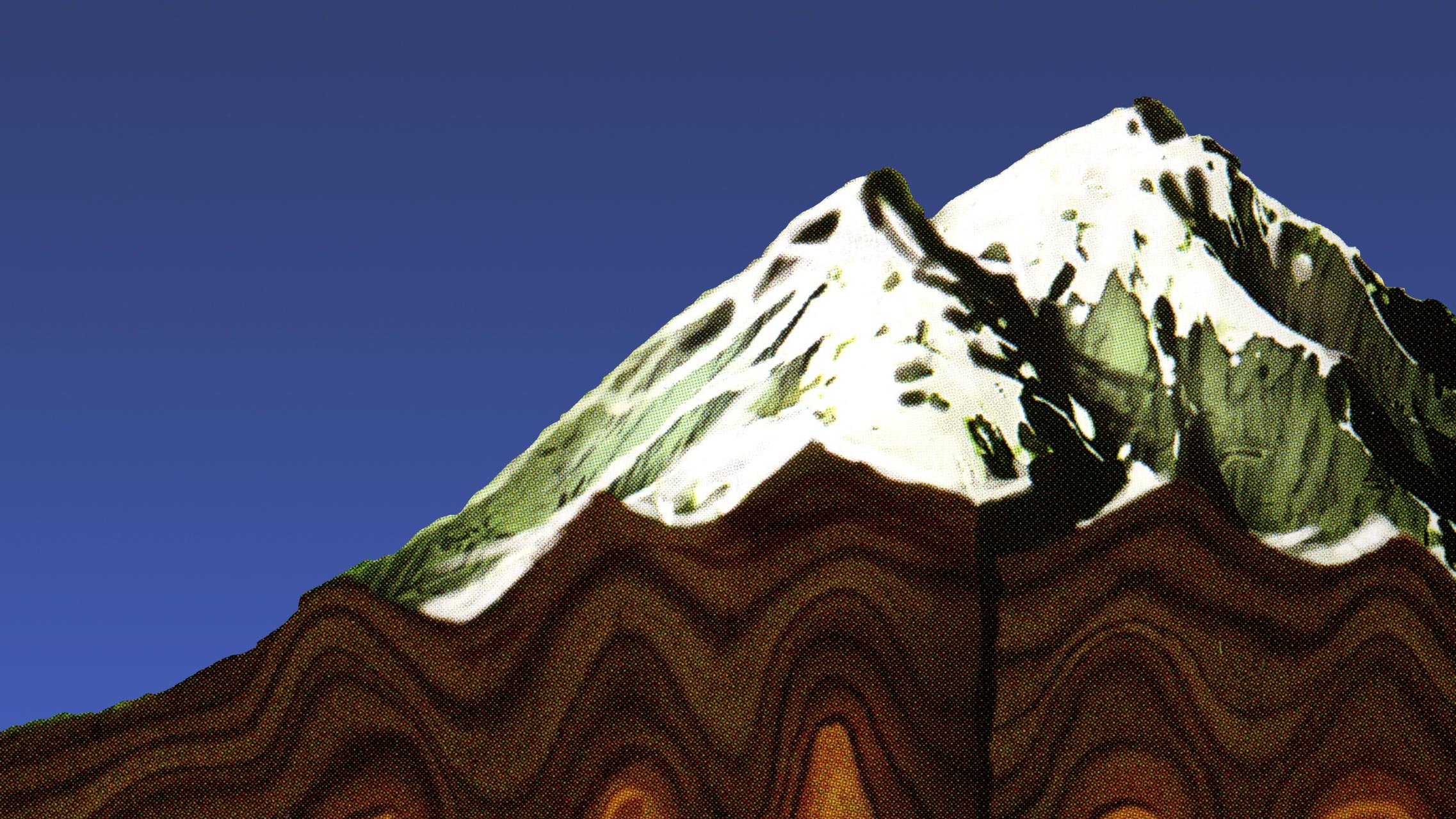


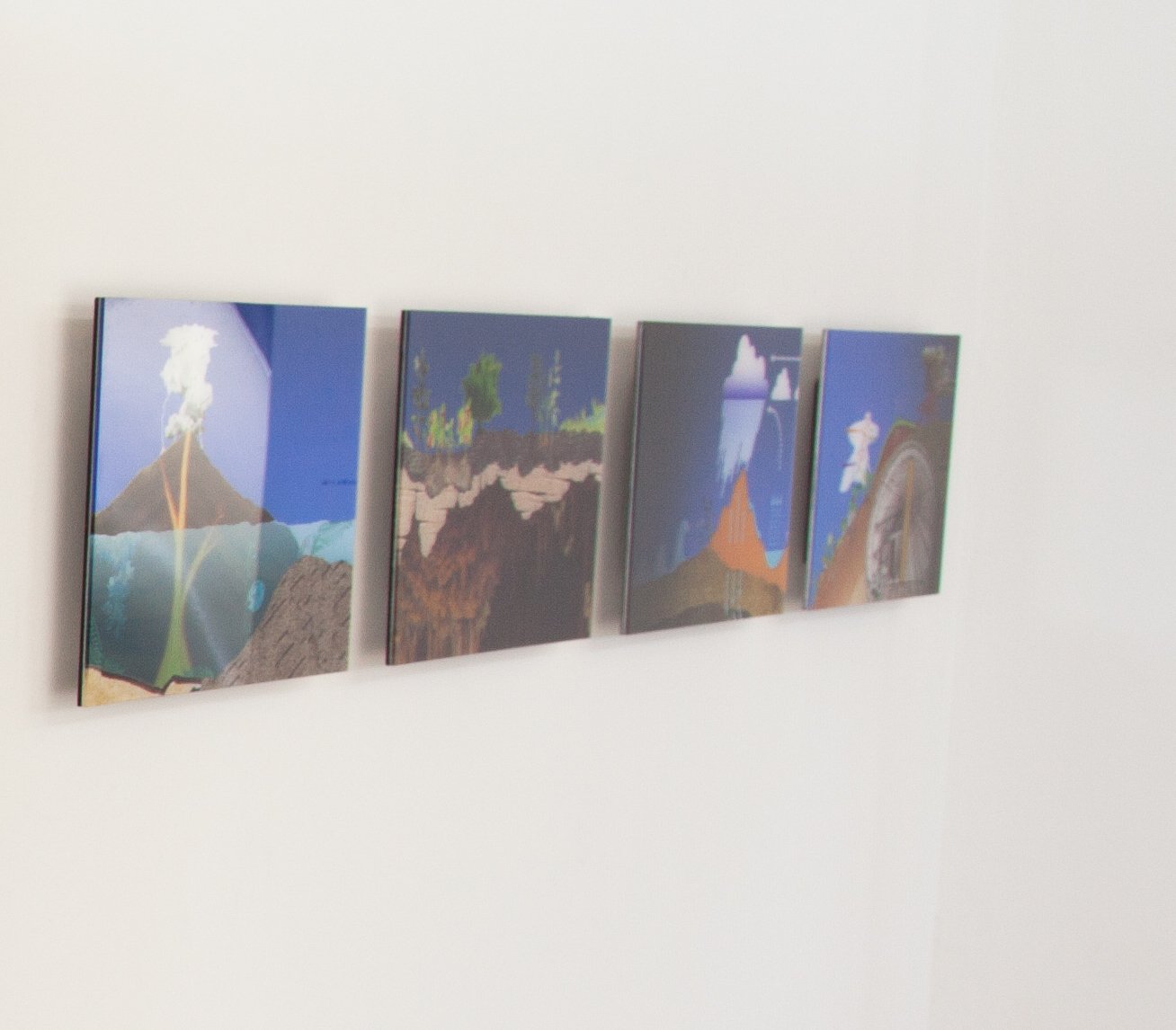



Look Inside Place is a virtual world and unwinnable game. The viewer explores the world as an androgenous anatomical figure drawing. As you explore you discover a world map from a collage of children’s books scientific cut away elevations. The world at first seems innocuous but soo you discover that things are not quite right but as you explore black text begins to crowd the screen and smog your view.
Twisted
Twisted is a series of color scans depicting extreme close ups of twisted plastic bags. The images were an experiment in mapping the tension of organismhood and the relationship between the embodied experience and the image technologies we use to scan, document, and diagnose those experiences.
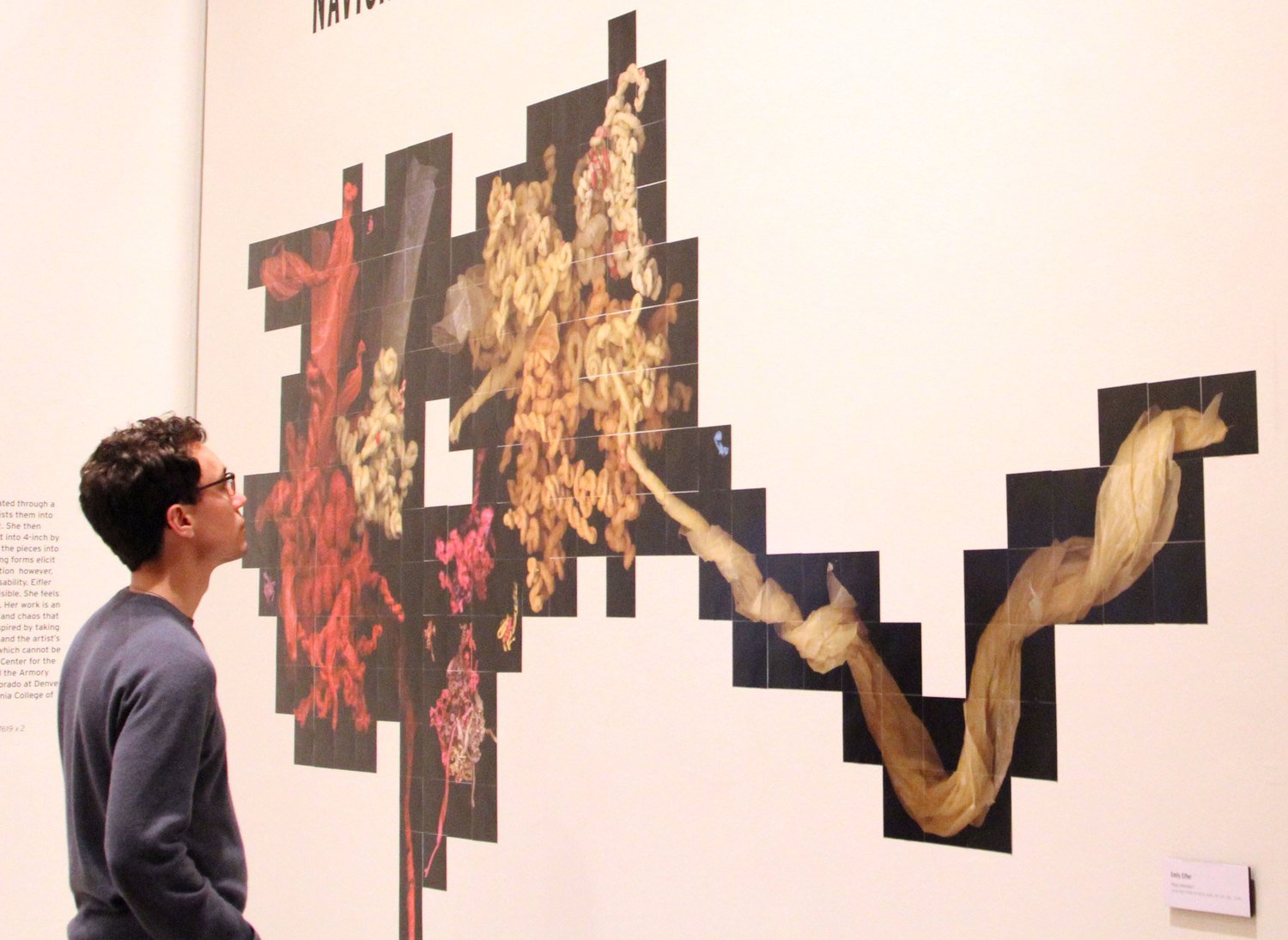
























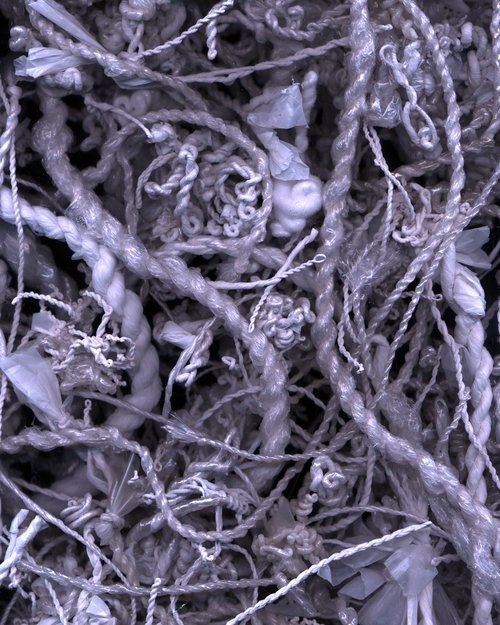











Plain Fake Loading Bar
Plain Fake Loading Bar generates unique loading bars but nothing ever loads. The viewer simply waits and waits with no answers, satisfaction, or relief, an experience akin to the frustration of waiting but never receiving help from doctors when you have a complex disability. It was the first piece BlinkPopShift created in collaboration with Steve Sedlmayr.
















